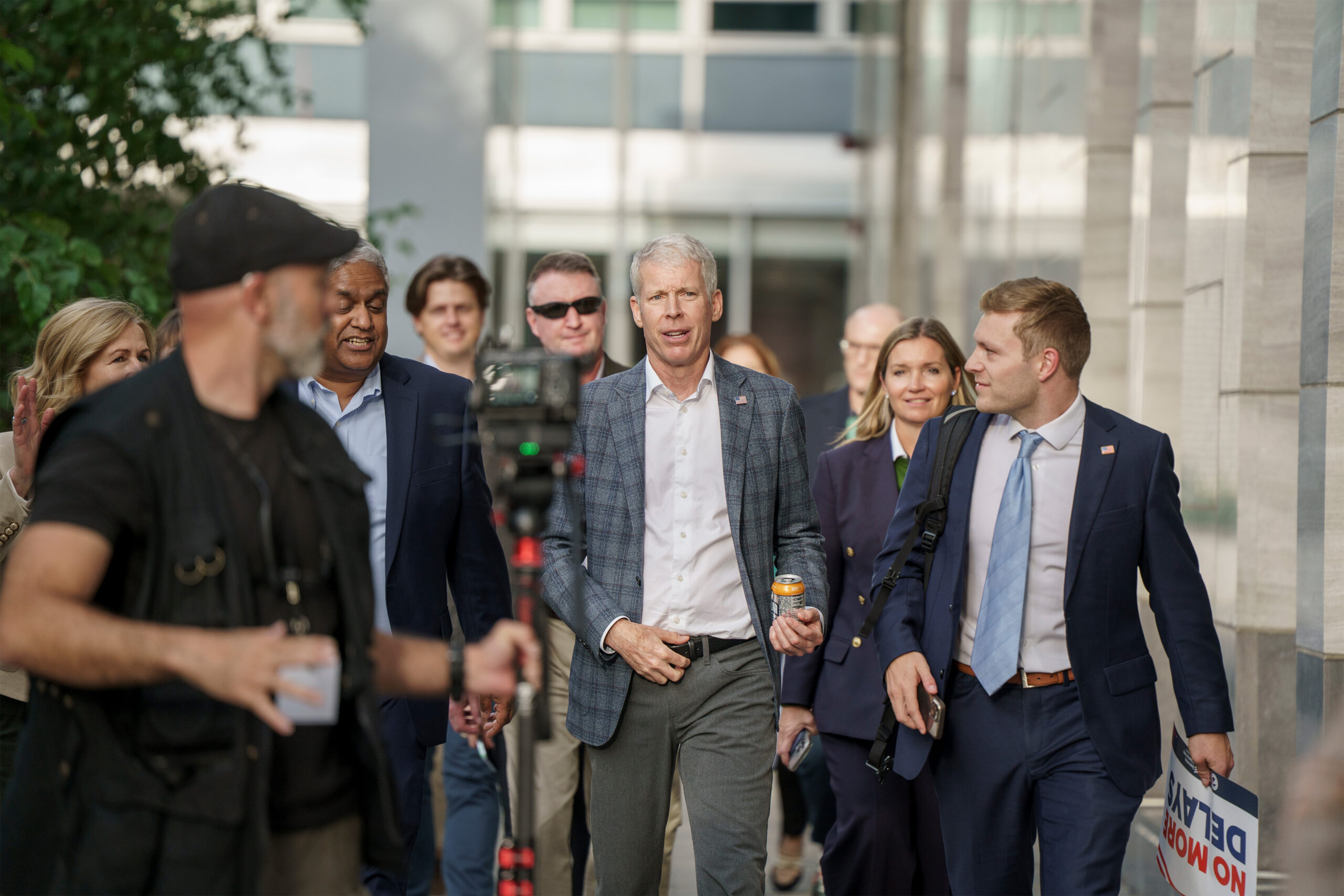Science
U.S. Energy Secretary Chris Wright Engages MIT Community on Innovation

U.S. Secretary of Energy Chris Wright visited the Massachusetts Institute of Technology (MIT) on March 15, 2024, to engage with faculty and students on innovations in energy technology. During his visit, Wright participated in a forum focused on energy innovation, observed research presentations from MIT-GE Vernova Energy and Climate Alliance scholars, and toured the labs where he once studied.
At the forum, held in MIT’s Samberg Center, Wright expressed his enthusiasm for the energy sector, stating, “I’ve always been in energy because I think it’s just far and away the world’s most important industry.” He emphasized the current momentum in the energy field, noting, “It is an awesomely exciting time to be in energy.” The event featured a panel discussion that included Ernest Moniz, former U.S. Secretary of Energy and current MIT Professor, who contributed insights on the intersection of climate, security, and energy equity.
MIT President Sally Kornbluth welcomed Wright and introduced the forum, highlighting the institution’s commitment to addressing pressing global challenges through scientific rigor and collaboration with industry. Kornbluth remarked, “MIT is still MIT… a community that rewards merit, boldness, and scientific rigor.” She underscored MIT’s role in developing transformational approaches to enhance U.S. energy security and competitiveness.
Wright, who became the 17th U.S. Secretary of Energy in February 2024, reflected on his experiences at MIT, stating, “Merit, boldness, and scientific rigor… that hit me hard when I got here.” He spoke about the necessity for innovation in various energy technologies, including fusion and geothermal energy, while advocating for market-driven development.
During the forum, Wright outlined three key areas of technological promise: artificial intelligence, fusion energy, and quantum computing, which he described as potential “game-changers” in the energy landscape. He also highlighted the importance of federal support for fundamental research conducted in national laboratories, calling them “absolute jewels” that play a crucial role in the nation’s future.
Moniz facilitated a dynamic fireside chat with Wright, addressing the interconnected challenges of climate change, energy security, and affordability. “Climate, energy, security, equity, affordability have to be recognized as one conversation,” Moniz said, emphasizing the urgency of addressing these issues collectively.
The forum was part of the Energy Freedom Tour organized by the American Conservation Coalition (ACC) in collaboration with the Hamm Institute for American Energy at Oklahoma State University. Following the MIT event, the tour will continue to other prominent academic institutions, including Stanford University and Texas A&M University.
In her remarks, Ann Bluntzer Pullin, executive director of the Hamm Institute, emphasized the importance of energizing students about careers in the energy sector. She praised MIT’s history of innovation, stating, “This is where so many ideas were born and executed that have allowed America to thrive in this energy abundance.”
The event also featured a panel discussion that included notable MIT alumni in the energy sector, such as Carlos Araque, CEO of Quaise Energy; Bob Mumgaard, CEO of Commonwealth Fusion Systems; and Milo Werner, general partner at DCVC. They discussed the critical role of innovation in their respective fields and the importance of turning laboratory breakthroughs into commercially viable solutions.
Mumgaard noted that Commonwealth Fusion Systems aims to put fusion energy on an industrial trajectory, while Araque asserted the profitability and potential of geothermal energy solutions. Werner emphasized the significance of scaling innovations to achieve real-world impact.
After the forum, Wright toured several research facilities on MIT’s campus, including the state-of-the-art MIT.nano facility, where he was shown advanced research equipment by Vladimir Bulović, faculty director of MIT.nano. The tour highlighted the institution’s commitment to cutting-edge research and collaboration with industry.
Wright’s visit concluded in the refurbished Grainger Energy Machine Facility, where he once conducted research during his studies. He engaged with MIT graduate students, discussing their energy generation innovations and offering insights into their future careers.
Overall, Wright’s engagement with the MIT community underscored the critical role of educational institutions in shaping the future of energy technology and innovation. Anantha Chandrakasan, MIT’s Provost, reaffirmed the Institute’s commitment to partnering with the Department of Energy and industry to address the nation’s energy challenges, inviting continued collaboration for mutual benefit.
-

 Technology5 months ago
Technology5 months agoDiscover the Top 10 Calorie Counting Apps of 2025
-

 Health3 months ago
Health3 months agoBella Hadid Shares Health Update After Treatment for Lyme Disease
-

 Health3 months ago
Health3 months agoErin Bates Shares Recovery Update Following Sepsis Complications
-

 Technology4 months ago
Technology4 months agoDiscover How to Reverse Image Search Using ChatGPT Effortlessly
-

 Technology1 month ago
Technology1 month agoDiscover 2025’s Top GPUs for Exceptional 4K Gaming Performance
-

 Technology3 months ago
Technology3 months agoElectric Moto Influencer Surronster Arrested in Tijuana
-

 Technology5 months ago
Technology5 months agoMeta Initiates $60B AI Data Center Expansion, Starting in Ohio
-

 Technology5 months ago
Technology5 months agoRecovering a Suspended TikTok Account: A Step-by-Step Guide
-

 Health4 months ago
Health4 months agoTested: Rab Firewall Mountain Jacket Survives Harsh Conditions
-

 Lifestyle5 months ago
Lifestyle5 months agoBelton Family Reunites After Daughter Survives Hill Country Floods
-

 Health3 months ago
Health3 months agoAnalysts Project Stronger Growth for Apple’s iPhone 17 Lineup
-

 Technology4 months ago
Technology4 months agoHarmonic Launches AI Chatbot App to Transform Mathematical Reasoning





















